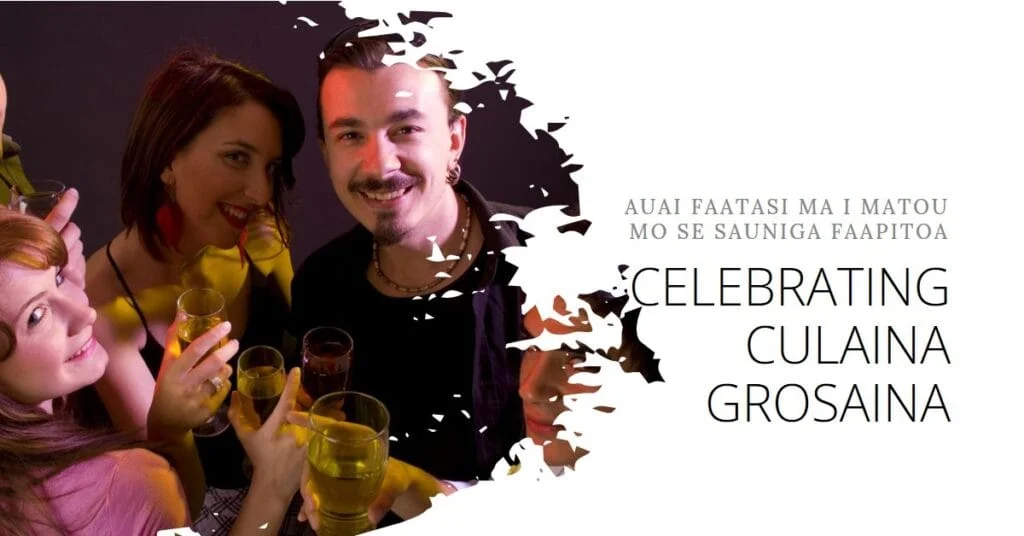The term culaina grosaina may seem foreign to many, but it is an integral part of modern cuisine that combines tradition with the intricacies of contemporary life. The concept is based on various methodologies, which have their origins in the past, and add a new spin to every aspect of cooking. In this case, culinary creation originated out of respect for food and a desire to create memorable dishes. It is the strength of the concept that resonates in its ideals; the ideals that emphasize on taste along with creativity in providing the appearance of the item. Some or rather all aspects of the ideal seem to remain timeless in a way, evolving with the ever-changing world. The concept will be examined with several critical questions being raised; this article looks to explain the rationale behind the emergence of culaina grosaina and its key principles, as well as consider its place in our society today.
While the expression ‘culaina grosaina’ might not be familiar to most, numerous ethnographic studies have elucidated and elaborated on the notion as it existed in the past. Sociologists and anthropologists have interpreted crude cuisine as food that is meant to be eaten without any pretense. Creating an exceptional dish in the past was not just about mixing ingredients, there was so much more pertaining to the overall experience. Food stands for a variety of things–history, cultural boundaries, national identity, and even convenience, of which, most people have long been able to take advantage of thanks to progressing globalization. However globalization has also made us become accustomed to the concepts related to the accessibility of food. But what is australian cuisine? Would it be more accurate to say Chinese food? Culinary borders were once defined by clear geographic boundaries, yet modern generations seem to defy the definition as new movements emerge that twist the age-old boundaries.
Culiana grossina originated from small rural communities whose primary focus was to conserve and utilize available resources when preparing a meal. Recipes were also inherited, and the selection of raw materials depended on what had been in store at that period. Gradually, the stylistic technique was enhanced through mergence with other influences or styles, but still adhered to technique and scrumptious and truly hearty dishes.
Key Elements of Culaina Grosaina
Culaina grosaina extends beyond a way of preparation into a creative perspective which is characterized by quality and artistry. Some such remarkable elements and distinctonje defining the cuisine are given below:
- Emphasis on Obtaining Products from the Surrounding Areas: The core aspect in the centers cliche and style culaina grosaina cuisine was the preference for the use of locally purchased products. This would imply the availability of the best quality however non-processed vegetables, herbs, meat and dairy produce which could all be gotten from the neighboring farms or markets. It also meant that more economically viable solutions would be created. There was extensive use of seasonal fruits and the design of the plate developed – choreography in favor of the tastes of the raw vegetables used.
- A Fine Balance: Rooted in tradition, culaina grosaina has a level of focus on incorporating new ideas and new ingredients into old recipes. In this philosophy, practicing chefs start with a classic recipe but add new tastes, approaches, and even cuisines from abroad into the mix. This combination of the old and the new is what makes culaina grosaina applicable today, as it caters for modern diners, but also respects the history of cuisine.
- Comforting and Overt Assets: Cuisine predstava in the style of culaina grosaina emphasizes great attention to detail with abundant and often quite intricate tastes. Attention is given to the sauces, meat dishes baked for a long time and plenty of spices which comprise the nature of the dishes. Most of the meals are somewhat comforting, but have impressive complexity as well, possessing nuances which enfold throughout the meal.
- Recall the Specifics: Relatively new to the facts of creative cooking, thanks to the changes of ideas, design has become a significant element of culaina grosaina. The classic encoding does not emphasize attention to decorative elements and the dish is usually served high quality and uncomplicated, but newer explanations are obliged to serve everything beautifully, enabling the impression of each meal.
Modern Cuisine’s Take on Culaina Grosaina
Chefs today are looking for new interpretations of this style. This quote best MC cooks, ecologically minded cooks can now appreciate this style in particular because it emphasizes the use of local and seasonal produce with the right approach. Culaina grosaina is a stylistic guide for chefs working in fine dining or farm to table formats who seek to add new meanings and innovative interpretations of domestic traditions into their cuisines. The style of culsina grosaina is about home cooking. It is about simplicity at its best and so just as much can be added to it. It is rustic but refined.
The culinary approach which is culaina grosaina also appears in very modern forms of cuisine which is fusion cuisine. A cuina grosina classic could properly make beef stew and then, redecorate it with the special wonders of flavors and some foods that every great cook warmed up to. This influence makes culaina grosaina an appealing style to aspirational chefs, yet urges the betterness of traditional core.
Culaina grossina Featured Dishes
Getting an idea of the famous culaina grosaina dishes is ideal in order to understand this style well. These meals are a good representation of the style’s emphasis on taste, genuineness, and creativity:
- Meat Stews: Lamb, beef, or poultry meat is locally available and stew is a prominent dish in culaina grosaina, which is made with a combination of various vegetables. These types of dishes include Stews and Daal that are cooked with meat, and also cook slowly and gradually with spices so that the taste is strong. A modern approach may incorporate cutting-edge spices or design around how the meat is cooked; nevertheless, the fundamental remains comfort and rich.
- Stuffed Peppers : These stuffed vegetables varieties make use of seasonal vegetables and are yet another fundamental food source of culaina grosaina. Peppers, zucchini, and eggplants are filled with rice and some meat stuffing, and mixed with herbs and then roasted. These dishes reflect the tenets of the style by conceptually highlighting the heavy and sometimes light flavors that will zone in the accent on fresh produce.
- Bread and Pastry Specialties: When breads and pastries in culaina grosaina are made, it is usually the result of using some of the traditional techniques which have been passed on from parents to their children. It could be a type of an old sourdough, or perhaps puffy sweets stuffed with dried fruits or nuts. These are presented either with meals or taken alone since they contribute to the comfort of the overall meal.
- Herb-Rich Salads and Side Dishes: Chefs in culaina grosaina are very adventurous when it comes to the use of greens and fresh herbs. Salads and other glyphs for side dishes are usually at most simple but exquisite since they can incorporate herbs such as parsley, basil, and dill. These dishes are oil and vinegar dressed and can cut through the richness of the main course dishes.
The Influence of Culaina Grosaina on Sustainable Eating
With the increasing concern of the world’s population on how best to grow food in a sustainable manner, principles of culaina grosaina also seem to be appealing once again. These ingredients are carefully selected to incorporate seasonal cooking as one of its features which would help keep the environment. Since it encourages the concept of using only what is fresh and locally available, culaina grosaina helps reduce the carbon emissions associated with the long distance transportation of food as well as waste by encouraging the use of what’s in season already.
Tomaš Puvljak notes that other than the historical side, which emphasizes the region’s agricultural tradition preserved in a stylized manner, “culaina grosaina would not be complete without respecting the traditional way of doing things.”
It is particularly a diverse range of cultural aspects that drives the increase in popularity of the movement. Nowadays more and more people consume food according to the culaina grosaina principles and feel a sense of pride in doing so.
Embracing the future that is now instant
With emerging trends, especially among younger generations who are interested in cooking in a sustainable manner and using local ingredients, it also ensures that craftsmen respect their traditions whilst thinking about the future of the craft. Young chefs nowadays blend modern principles with longevity, calling for creativity in design. The doubts that traditional culaina grosaina may have negative impacts are dissipating, as are outdated practices.
Commercialization has also had a positive impact on culaina grosaina’s image. The growing understanding nowadays is that it can be successfully combined with modern techniques, especially when looking to the future. As culaina grosaina expands to new horizons, it seems likely that the best parts will remain intact, like components of a well-stacked sandwich.
Conclusion
As we have seen, culaina grosaina contributes to the modern culinary world. It is appealing for its focus on the freshest possible products, its roots in specific cultural contexts and traditions, and its willingness to explore new ideas. For the audience that enjoys pure taste, painstaking work, and love for local food – the philosophy of culaina grosaina can reward one seeking an awakened delight to the infinite aspect of food.
As we adopt and practice culaina grosaina, we embrace incalculable complexities of a set of ideas, practices, and philosophies that combine high-level craft with an emphasis on sustainability and originality. It is not the style that one adopts for bare re-establishment at a high-end restaurant or in a home kitchen; it is the style that embodies a philosophy where each meal tells a story with the beautiful fusion of food, culture, and history. This culinary art will surely continue to be influenced by various sociocultural changes, just like any other form of art.











